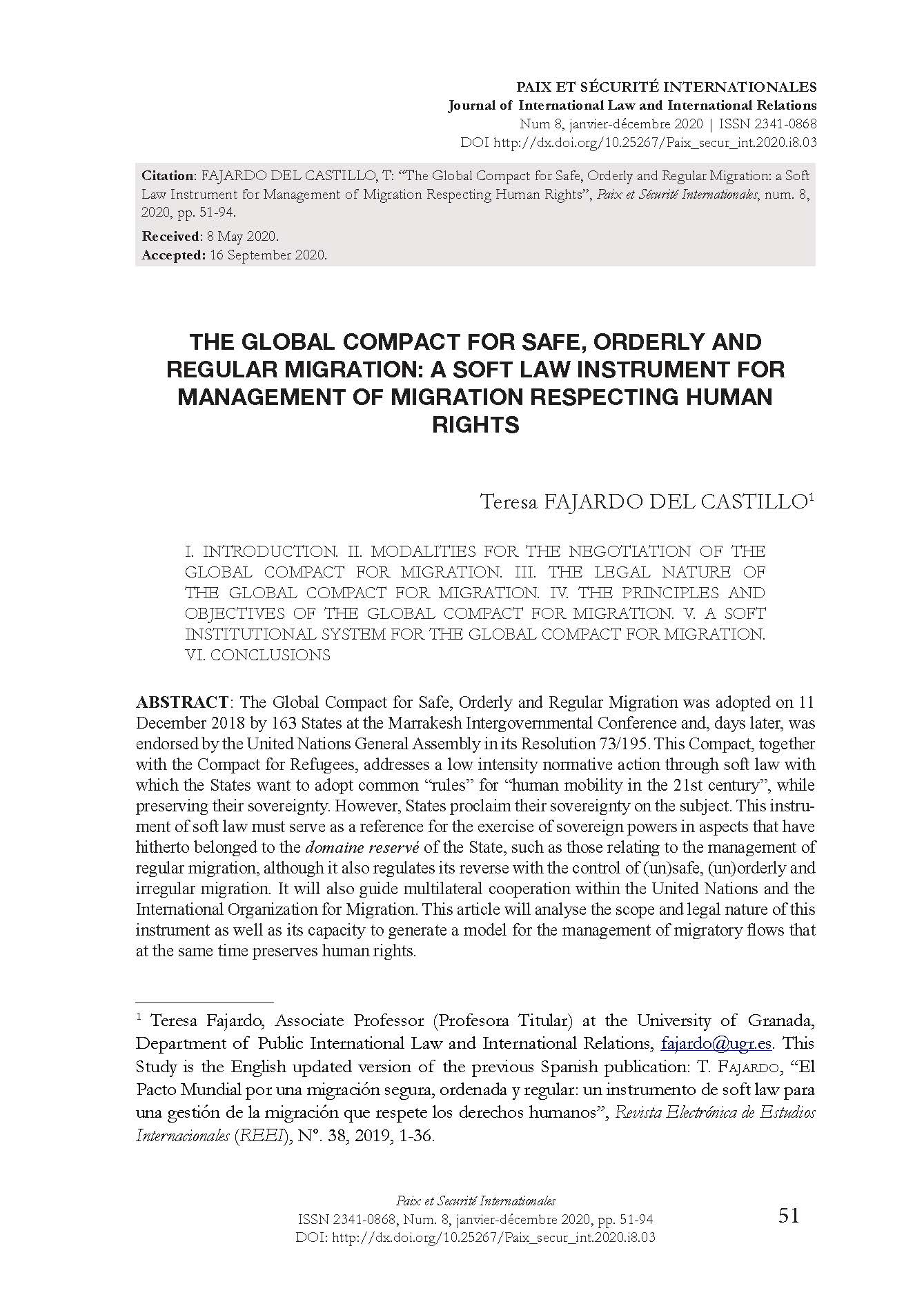The Global Compact for safe, orderly and regular migration: a Soft Law instrument for management of migration respecting human rights
Abstract
The Global Compact for Safe, Orderly and Regular Migration was adopted on 11 December 2018 by 163 States at the Marrakesh Intergovernmental Conference and, days later, was endorsed by the United Nations General Assembly in its Resolution 73/195. This Compact, together with the Compact for Refugees, addresses a low intensity normative action through soft law with which the States want to adopt common "rules" for "human mobility in the 21st century", while preserving their sovereignty. However, States proclaim their sovereignty on the subject. This instrument of soft law must serve as a reference for the exercise of sovereign powers in aspects that have hitherto belonged to the domaine reservé of the State, such as those relating to the management of regular migration, although it also regulates its reverse with the control of (un)safe, (un)orderly and irregular migration. It will also guide multilateral cooperation within the United Nations and the International Organization for Migration. This article will analyse the scope and legal nature of this instrument as well as its capacity to generate a model for the management of migratory flows that at the same time preserves human rights.
Keywords
Downloads
How to Cite
License
Copyright
Es condición para la publicación que el autor o autores ceda(n) a la Revista, en exclusiva, los derechos de reproducción. Paix et Sécurité Internationales es una revista que proporciona un acceso abierto inmediato a su contenido totalmente gratuito para lectores como para los investigadores que pretendan publicar en ella, ya que no se realizan cobros por concepto de envío, procesamiento ni publicación. Los usuarios podrán leer, descargar, copiar, distribuir, imprimir, buscar o enlazar el texto completo de los artículos publicados, o utilizarlos para cualquier otro propósito, dentro de la legalidad vigente. Y podrán hacerlo sin coste alguno, y sin necesitad de solicitar permiso al editor a al autor. Todo ello de acuerdo con la definición de acceso abierto de la Iniciativa Acceso Abierto de Budapest.







